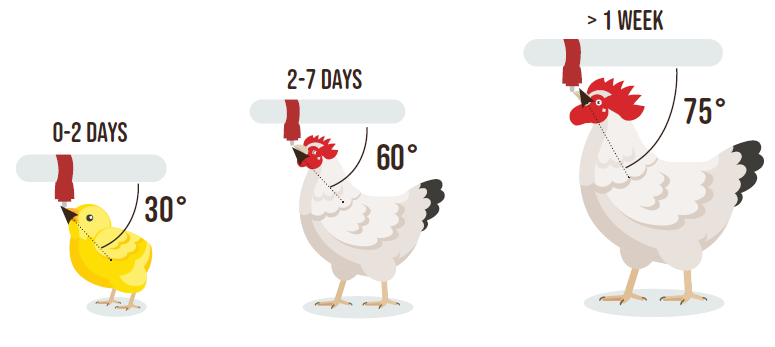5 tips & tricks for healthily drinking broiler chicks
The significance of water often goes unnoticed, yet it’s a cornerstone for the performance, development, and health of broiler chicks. But how do you guarantee a qualitative and ample water supply that fully meets their needs?
Water, a bird’s vital lifeline
Did you know that a bird’s body consists of approximately 60% water? Then you will understand that water is not just another nutrient; it’s the most crucial one. Water isn’t just for hydration – it is also essential for transporting nutrients, eliminating waste, and regulating the bird’s body temperature. Without it, chicks simply cannot survive.
5 do’s to optimize your water management
From individual bird behavior to housing conditions, various factors influence water consumption. But by abiding by 5 basic water management principles, most issues can be avoided.
1. Observe drinking behavior
Have you ever watched broilers drink? It’s a brief affair – less than a minute at a time, with three to five pecks to quench their thirst. Any deviation from this routine is a red flag that signals potential water availability issues.
2. Keep an eye on the climate
Under normal conditions, chicks consume twice as much water as feed. But crank up the heat and humidity, and their water intake can double or even quadruple. There is also a clear connection between drinking and foraging behavior. Without water, the feed intake drops, and vice versa. This is why early feeding and ensuring a reliable water source are both imperative.
3. Ensure accessibility and flow rate
The heart of the matter is simple: every bird must have access to sufficient water. This is where the placement of drinking nipples comes into play. For effective water distribution, a recommended ratio is 1 nipple per 8-12 birds, with a maximum of 6 meters between lines. The correct height of the nipples ensures accessible drinking water throughout the birds’ lives.

| Age (weeks) | Watering (ml/min) |
| 1 | 40 |
| 2 | 50 |
| 3 | 60 |
| 4 | 70 |
| >5 | 90 |
4. Keep drinking pipes clean
When water flows through the drinking pipes, minerals and other organic particles can form a deposit on the pipe walls. This can quickly cause a slimy layer of biofilm to grow, containing residue of vaccines, antibiotics, and vitamins. This poses a potential risk – especially at the start of a round, when the house temperature is high and the animals drink relatively little water (which means little flow through the pipes).
The biofilm build-up can not only cause wear, blockages, and leaks in the pipes – it can also become a breeding ground for bacteria like Salmonella, campylobacter, E. coli, and enterococci. Bacteriological contamination can cause chicks to have abnormal water intake, poor digestion, or even higher mortality. Regular rinsing and disinfection are the frontline defenses against these invisible foes.
5. Monitor water quality
When it comes to water, quality is non-negotiable. If it’s not fit for humans, it’s not fit for chicks. For an assessment of the drinking water quality, you can simply rely on your senses: it should be colorless, clear, odorless, and tasteless.
But if you really want to know if the water content differs between houses or if there is any form of pathogenic contamination, regular chemical and bacteriological testing is the only way to go. Our advice: perform both analyses at least twice a year as a straightforward yet effective way to safeguard your chicks’ health and performance.
This contact was suggested based on the location you are browsing from. You can of course also consult our other contacts and locations here.

